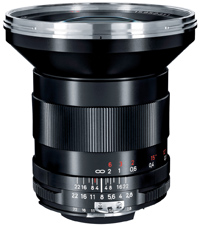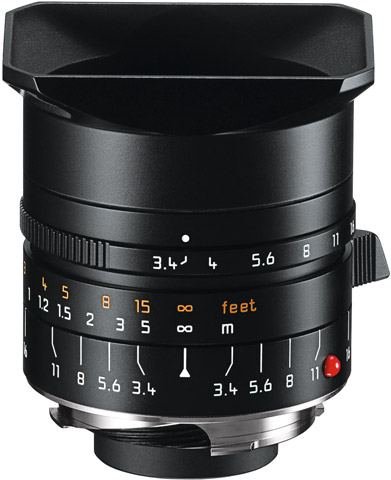Reader Asks: Which is Better, Zeiss 21/2.8 Distagon or Leica 21/3.4 SEM ASPH?
See my previous post on the Zeiss 21mm f/2.8 Distagon for Canon and Nikon.
Jeffrey K writes:
I would greatly appreciate a brief response from your perspective/opinion on a match up between the Leica 21mm/3.4 Super-Elmar-M ASPH and the Zeiss 21mm f/2.8 Distagon as follows:
Assume two ideal cameras (and a photographer with impeccable skill and technique), one with a Leica M mount and the other with a Nikon F mount, with equivalent sensors in the range of 24 to 36 megapixels without anti-aliasing filters, would these two lenses perform nearly identically or would one outshine the other?
DIGLLOYD: Both are superb, and differences would absolutely revolve around other factors, such as focus accuracy, sensor resolution, field curvature (as minimal as it is with both lenses), sensor cover glass thickness.
Short answer: it’s not really a relevant question. But let me explain.
The MTF charts are very close so in theory both lenses should perform similarly.
However, the sensor cover glass can impair image quality; Zeiss cannot assume any particular sensor cover glass thickness (same optical design for Canon/Nikon/Pentax), and so must design the optics assuming some average thickness of the sensor cover glass. In this respect, both Nikon and Canon have a distinct design-time advantage; Nikon and Canon can compute their lens designs to be optimal for the sensor cover glass thickness of their pro bodies (Nikon need not be concerned with Canon bodies, and vice-versa).
In short, the question delves into which specific camera is used, and is thus unanswerable in an absolute sense except by reference to a specific camera. I intend to test all the Zeiss ZF.2 lenses on the 36MP D800E, and we shall see.
Given that the Zeiss 21/2.8 Distagon is ~1/2 stop faster and has to be designed around a mirror box, it is quite a design accomplishment for it to be so close (MTF) to the Leica design (very close). But since performance is at such a high level, any small impairment to the optical path is a real factor to consider.
As an example of sensor cover glass as a factor, some of the wider angle Leica M lenses show a substantial quality loss on the Sony NEX-7. That quality loss is not the lens, it is the cover glass interfering with the optical path as designed.
In actual fact, this question is hardly the main issue— one cannot shoot the Leica lens on a DSLR— too short a backfocus distance. But both lenses can be shot on Sony NEX and other ALLVIEW cameras. Here the Zeiss might have an advantage, due to its retrofocus design, but it is also much larger and heavier, so ergonomics alone might reduce its appeal.
































